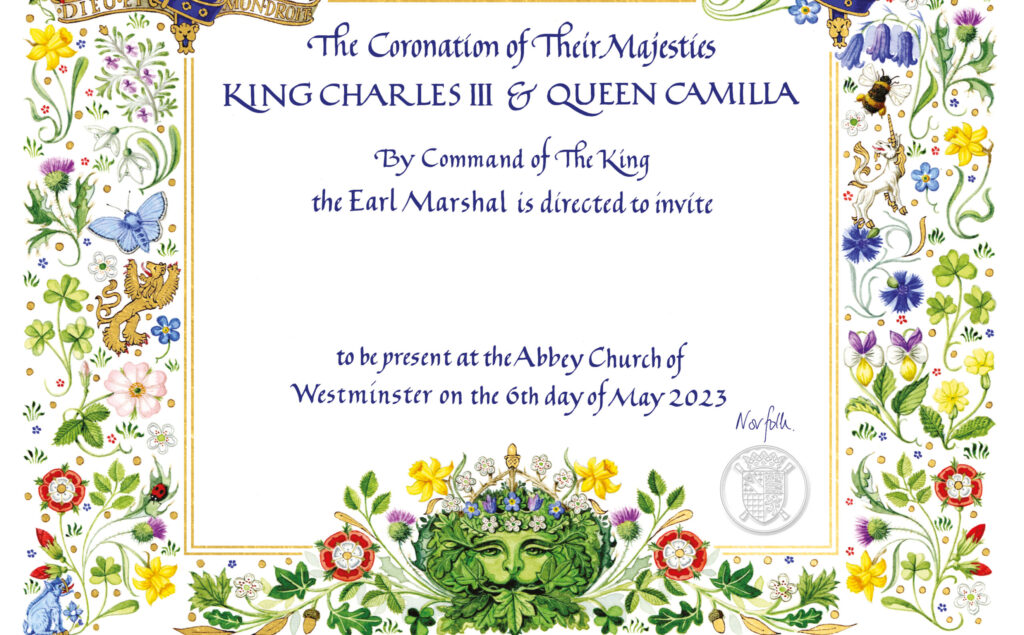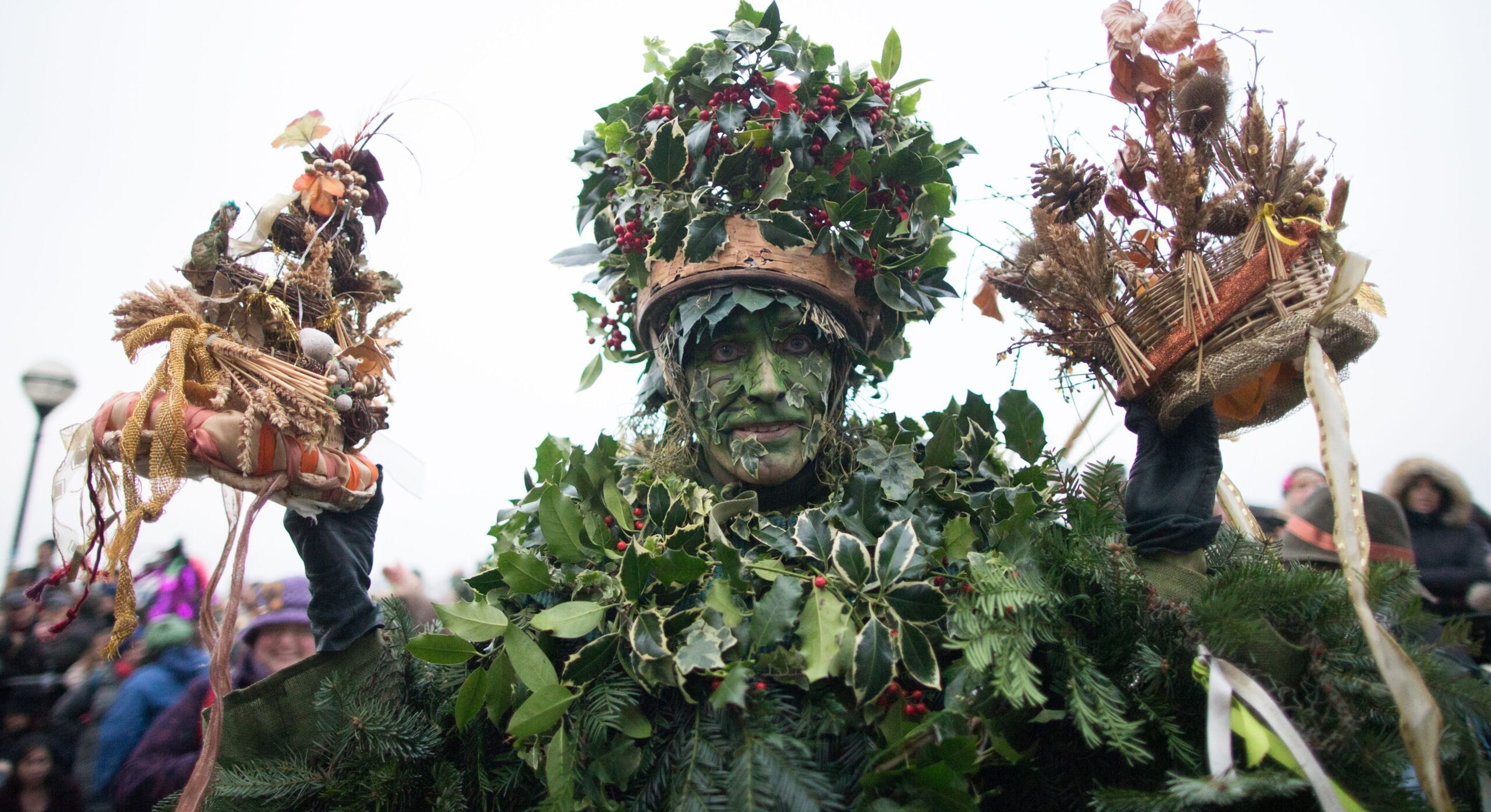In the early hours of 4th April, social media reacted with frenzy at the release of the invitations to the Coronation of King Charles III. Evocative of the nineteenth-century arts and crafts movement, the intricate watercolour and gouache invitations, designed by Andrew Jamieson, are decorated with a plethora of semantically charged flora and fauna from the British Isles. However, it was the vegetal figure at the lower border, adorned with the emblematic flowers of the United Kingdom, that got everyone talking. Was that… a ‘Green Man’?

Today, their semiotic implications are often unavoidable. To the 21st-century viewer, a leafy face emanating sprigs of vegetation as it gazes languidly out from the page might conjure up ideas of death and resurrection, growth and decay, transience and ephemerality, or even a cyclical movement that is continuous in transformation yet always on the verge of collapse. Perhaps something archetypal and a vestige of the still-bright past, in the common memory of folk rituals and annual rites. However, where do they come from, really? Is there actually a connection to paganism? The true history of the motif is far more nuanced.
Adapted from the lexicon of antiquity, foliate figures were distributed in abundance throughout the cathedrals, churches, and monasteries of medieval Europe, appearing across a wide range of material objects. Of Gallo-Roman origin, by the 12th century they had become ubiquitous, flourishing in the liminal zones of manuscripts and buildings. Referred to as ‘tête de feuilles’ (‘foliate heads’) in the High Gothic period, since 1939 these enigmatic figures have often been referred to as ‘Green Men’ in the anglophone world.
It was a term coined in 1939 by Lady Raglan, who concluded that the medieval foliate heads she saw in English churches were derived from the myth of Robin Hood and the Jack-in-the-Green of May Day: potentially a pagan woodland deity of some kind. Her theory was balderdash, but it became popular nonetheless. The so-called ‘Green Man’ is a post-19th-century Frazerian invention, sustained by nationalistic sentimentality and romanticism. Intriguingly, it is not ‘an ancient figure from British folklore’, as the Royal Household has proclaimed, but a European import. In a post-Brexit UK, the sad irony of this is not lost.
Indeed, during their heyday these leafy denizens flourished across the art and architecture of Europe. They died down with early modern memento mori and were resurrected with the 19th-century Gothic revival. It was only during the 20th century that the motif was adopted by the New Age movement and neo-paganism; this cultural appropriation has been preserved and propagated by modern art, literature, film, nature festivals and online communities.
Now, in 2023, it seems we are about to see a new classical revivalism take to the stage. But how much can we hope for in the new Carolean era? Released in the approach to the Easter weekend, the Coronation invitation foliate head is boldly ornamented with a crown of thorns, topped with a golden acorn. Reminiscent of its medieval antecedents, the iconography of the Coronation invitation interweaves contemporary concerns with historic thought and ever-changing ideas.
In our age of technology, industrialisation and ecological disaster, the current climate crisis looms ever-ominously on the horizon. Much agricultural produce is air-freighted, the cost of food is at an all-time high, and wildlife and habitats are increasingly under threat from ill-advised development. Public green spaces are scarce, and ‘sustainability’ in proposals for new architectural development feels more like a buzzword to justify huge steel-framed skyscrapers clad in concrete and glass: a new kind of ‘greenhouse effect’ in microcosm.
Isn’t this the epitome of what King Charles had been campaigning against in all his decades as Prince of Wales, and as a patron of the arts and humanities? Indeed, on the Coronation invitations we see a ‘Green Man’ in his own image, and perhaps a harbinger for the reign to come.











Join the discussion
Join like minded readers that support our journalism by becoming a paid subscriber
To join the discussion in the comments, become a paid subscriber.
Join like minded readers that support our journalism, read unlimited articles and enjoy other subscriber-only benefits.
Subscribe